„Die Biosphäre [bioˈsfɛːrə] bezeichnet die Gesamtheit aller Räume eines Himmelskörpers, in denen Lebewesen vorkommen“(Wikipedia)
Am 6. Dezember war nicht nur Nikolaus, sondern auch Halbzeit in meiner Biospäre mitten im Ghanaversum. Die Hälfte der Tage ist nun herum und obwohl die letzten Wochen nur so an mir vorbeigerauscht sind, kommt mir unsere Ankunft vor, wie ein Ereignis vor langer Zeit in einer weit, weit entfernten Galaxis.
All die Alltagsherausforderungen, wie der erste Arbeitstag, die erste Nacht unter dem Moskitonetz oder das erste mal Stromausfall, sind schon wieder von vielen neuen Eindrücken überlagert und es gibt noch so viel mehr zu lernen und zu entdecken. Pünktlich zur Halbzeit war auch der zweite Report für die UNESCO in Ghana fällig, indem ich die Arbeit der letzten zwei Monate zusammengefasst habe:
Report on the Voluntary service in Sogor Ramsar Site No.2
by Ronja Trübger (16/10/19-16/12/19)
Talks and activities at work
Planting trees: We loaded up the Pick with Mangrove seedlings and planted them in the lagoon together with the community from Tobloku. Furthermore, we planted fast growing trees next to the village, so that the communities can use them for firewood instead of the mangroves.
Raising mangrove seedlings: The Wildlife Commission continued to slice water sachets and filled 19.680 of them with soil for planting seedlings (Acacia mangium). We collected ripe seeds in the wetlands and peeled them before planting. Afterwards we planted 17.000 mangrove seedlings in plastic sachets. Furthermore we took care of the one year mangrove seedlings by watering them. We cleaned the area from litter and removed old leaves, sticks and weed.

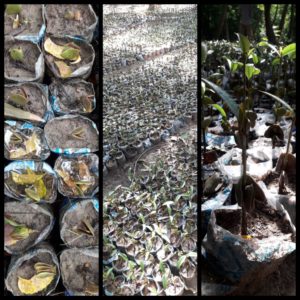
Turtle monitoring: I took part in the weekly beach patrol at a beach quad, in which we counted and documented the turtle tracks and the death individuals of three different marine turtles (olive ridley sea turtle, leatherback sea turtle, pacific green sea turtle). I saw many tracks of adult turtles, tracks of hatched baby turtles, intact nests and destroyed nests by wild dogs.
Turtle Hatchery: Whenever we saw a nest of a turtle, which was too close to the sea so that the survival of the eggs was in danger, the Wildlife Division removed them and brought them to the Hatchery. There we had already buried two nests of an olive ridley turtle (102 eggs; 98 eggs) and one nest of a leatherback turtle (65 eggs). When it’s time for them to hatch, we will release them into the sea.
Turtle rescue: Because of light irritation from human settlement or unspecified wind directions, the nesting marine Turtles sometimes lose their orientation and after their egg deposition they creep in the wrong direction. When the community members find them in the morning they call the wildlife division to rescue the turtles. During the last weeks I helped to pull tree leatherback marine turtles back into the ocean.
River cleaning: Every Thursday the river bank next to the office is cleaned by the forestry commission together with the community Obane downstream. All Trees, reeds and algae at the riverside are cut down and removed to improve the river flow into the Songor lagoon, which is too dry and salty because of the salt extraction.

Ecotourism services: I took part in the turtle night walk two times. We searched for nesting Turtles and tracks together with the tourists. Additionally, we cruised with a boat on the Volta river, to show estuary and creeks and explain our work with mangroves and wildlife.
Education: Sometimes on Fridays, we went to the associated schools of the Biosphere reserve for an education program. The wildlife division taught the students in nature protection, environmental conservation and human rights. Therefor we prepared a short theatre scene about littering and the correct waste management. In Addition to this we started with the education programme in the community meetings to give the residents the possibility to inform themselves and ask questions.
Seminar: I went to the UNESCO seminar in Cape3points in November to talk about problems, challenges and future plans in our hosting site.
Meetings with the Community: I took part in a meeting with the Legon university of Ghana, the EPA (Environmental Protection Agency) and the FAO (Food and Agriculture Organisation of the united nations). It was for a research project about sustainable ways of using resources in the Songor Biosphere Reserve considering the climate change. Therefor the we visited the community in Obane and Tobloku to interview them about their use of resources and which environmental challenges and changes in nature processes they realised in the last few years.
Meetings at the Schools: We went to the associated schools to talk with the headmaster, teachers and prefects about their environmental education programmes in the past and their plans for the future. Afterwards we pointed out the environmental challenges they realised in the schools. We already informed them about the art competition the Wildlife Division is going to organise next term. The participants can show their own ideas and wishes for nature protection in a creative way.
Private
After the first half of our voluntary service, I feel comfortable in Ada Foah and with my daily life. In November Annika, the volunteer from the Bia Biosphere reserve, switched her hosting site to our place. Now we are three volunteers in Ada Foah and I enjoy living and working with the others.
During the last months we got to know our neighbours, neighbour kids and colleagues intimately. I am now familiar with many habits, the local food, celebrations, Dangme songs and the language in Ada. Especially at the Hogbatschotscho-Festival in Anloga I learned much about the traditions and history of the Eve people. Furthermore, I continued my Dangme lessons two times a week.
In my free time I enjoy meeting friends, going to the beach and playing badminton or doing handcrafts with our neighbours‘ children. So far I travelled to the Shai Hills national park and the Kakum National Park to explore the wildlife and landscape of a rainforest and a coastal savannah. Together with the other volunteers I went to Lomé (Togo) to renew my Ghanaian Visa and we visited the slave castles in Cape coast and Elmina on the way to the UNESCO seminar in Cape3points.
Challenges
Because the Park manager changes in December, Mr. Agyeman Dickson, the current park manager, was only a few times at the office in Ada. Therefore, the Wildlife Division was working mostly self-sufficient and sometimes there were internal communication problems and several misunderstandings between all employees.
I also had another disagreement about the tree planting, because the seedlings are still planted together with the plastic sachet. I tried to point out other planting methods without sachets, but the Wildlife Division refused to try them and forbade me to continue. They will continue to plant plastic sachets.
Moreover I am often confronted with contradictions: In the schools the Wildlife Division teach the kids not to burn their plastic litter, but often there is no recycling alternative and not even a waste disposal. Even the Wildlife Division is burning the rubbish in a sinkhole next to the office.
For me as a female volunteer it is often hard to accept that women are still discriminated and deprived in some ways. So for me it’s sometimes mores difficult to give my opinion and I feel excluded. For example I’m not allowed to do appointments with the teachers or headmasters about our projects considering the art competition though I’ve got some experience in working with youth groups and painting. Only the other volunteer, Lukas – as a man, is accepted for these assignments. Often he is the only volunteer, who is going to be informed about changings in working tasks or organization. This bias not only against me but against all females is more than annoying.
Zudem waren wir am Wochenende vor Nikolaus nochmals in Accra. Lukas steht im Kontakt mit einer Frau, die in einem Öko-schools Projekt arbeitet. So sind wir an dem Donnerstag zu „Thursdays for future“ nach Accra gefahren und haben gemeinsam mit ihr, ihren Kollegen, Lehrern und Grundschülern demonstriert. Viele Menschen, die ich hier in Ghana gefragt habe, haben zwar noch nie von Fridays for future gehört, aber die Kinder haben das den Parolen nach zu urteilen nicht zum ersten mal gemacht. „What do you want? – Clima justice!“
Und saubere Meere bitte! Aber auch an der Plastikfront hat sich was getan. Am letzten Wochenende waren Annika und ich bei einem Beachcleanup! Organisiert wurde die Aufräumaktion vom Dreamland Hostel auf der anderen Seite der Straße im Rahmen einer Plastikkampagne. Leider waren wir nur zu fünft und konnten auf Grund der Massen an Müll und Seetang nur einen kurzen Strandabschnitt mit Haken säubern. Trotzdem soll die Müllsammlung von nun an regelmäßig statt finden und die Anwohner eingeladen werden. Es bleibt also spannend!
Advent, Advent… die Sonne brennt. Ja, wenn ich hier bei 35° Celsius Sonnenschein Mangroven pflanze oder in T-Shirt am Strand laufen gehe, fällt es einem einfach schwer an Schneemänner und Weihnachtsmärkte zu denken. Weihnachten wird hier in Ada Foah kaum gefeiert, oder zumindest in anderen Dimensionen zelebriert, als ich es aus Deutschland gewohnt bin. Statt Tannenbäumen und Wintermützen gibt es hier Palmen und Flip-Flops.
Trotzdem fällt es mir schwer die Vorweihnachtszeit so ganz ausfallen zu lassen. Deshalb haben wir jetzt einen Adventskranz aus Muscheln und am WG-Adventskalender hängt von zermatschen Überraschungseiern bis hin zu Meeresmüll so ziemlich alles mögliche.
Auch die Nachbarskinder habe ich mit meiner selbst aufgezwungen Weihnachtsstimmung anstecken können. Dieses Wochenende sind sie schon zum zweiten mal vorbeigekommen, um Glitzersterne zu basteln und Weihnachtsbriefe für ihre Familien zu schreiben.
Gestern habe ich dann noch den letzten Punkt auf der Liste abgehakt, und im Office selbstgebackene Plätzchen und Zimtschnecken verteilt.
Die Weihnachtsbäckerei ist dieses Jahr auf Grund von mangelnden Zutaten und Küchenutensilien (wie beispielsweise gesalzener Margarine statt Butter, dafür aber ohne Waage, Backpapier oder Ofen) etwas anders verlaufen als sonst. Trotz der motivierenden Unterstützung von Rolf Zuckowski war es echt Knochenarbeit den zähen Teig auf dem Tisch zu verteilen und abschließend wurden die Plätzchen auf niedrigster Stufe in dem lauwarm Backofen unserer Nachbarin geröstet.
Gestern im Office war es bei die Dose dann trotzdem nach wenigen Minuten leer. Auch wenn es nicht so richtig typisch gefeiert wird, schmecken tut Weihnachten auf jeden Fall auch im Ghana.
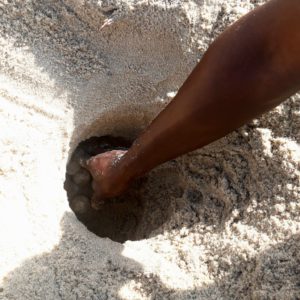
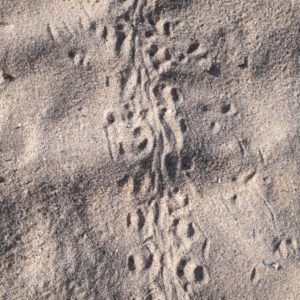
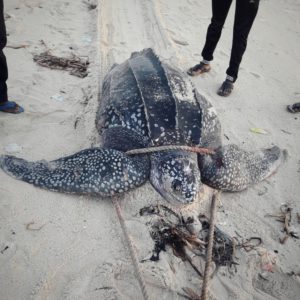
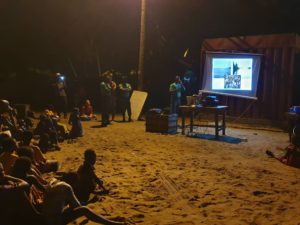
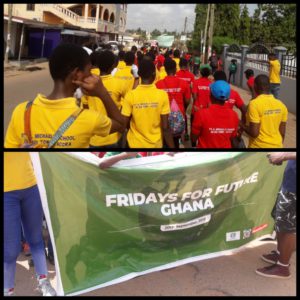
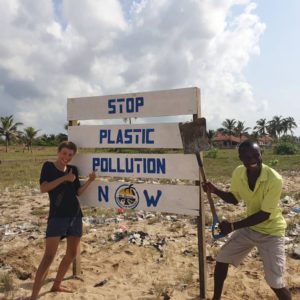
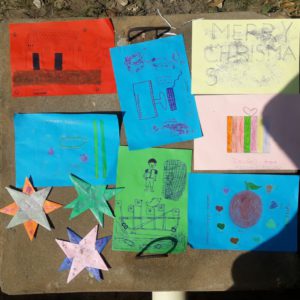
Thanks for sharing, Ronja! It’s always fascinating to read what you are doing and learning and what you have accomplished! It must be very frustrating at times, I can only imagine. By being there and making suggestions and asking questions and nudging in the right direction, you are making a difference for our climate and women’s rights, even if it might not seem that way all the time. Keep up the good work.
I have a question about the wild dogs attacking the turtles. Would those be the species wild dogs or domesticated dogs gone wild that are harming the nests?
Thanks for your interest and kind words. The dogs which are eating the eggs and destroying the nests of the marine turtles are domesticated dogs. I coosed the wrong vocabulary to describe them. Luckily there are no wild dogs living in our area.
Kontinuierliche Verbesserungen sind besser als hinausgezögerte Vollkommenheit
(Mark Twain)